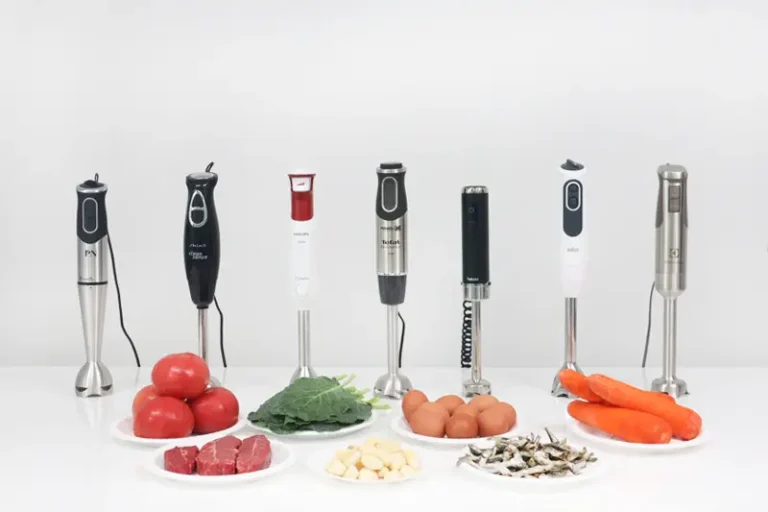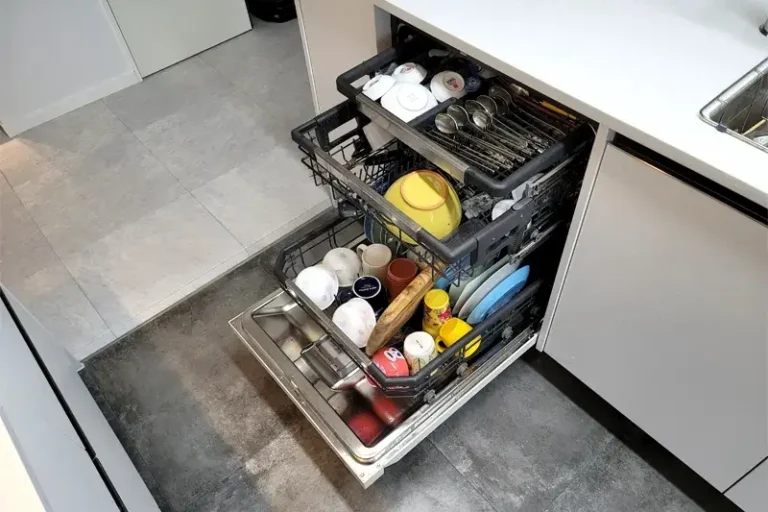The Best blenders Buying Guide

How to Choose a High-Speed Blender That Can Even Crush Ice
As people spend more time at home, many are using blenders to process fruits and vegetables. High-speed blenders that can finely grind hard fruits and even ice are particularly popular. Let’s explore the various types of blenders and how to choose the right product.
Chapter 1.
blender Operating Principles
Types of Blenders and Mixers and Their Operating Principles
1. Classification by Operation Method
Blenders and Grinders Use Blades
Juicers Extract Juice by Pressure
Appliances used for grinding or mixing ingredients are generally called blenders (or mixers). They can be categorized into three types based on how they handle ingredients and their purpose: blenders, grinders, and juicers.
What we commonly call a mixer is just another term for a blender; they’re essentially the same product.
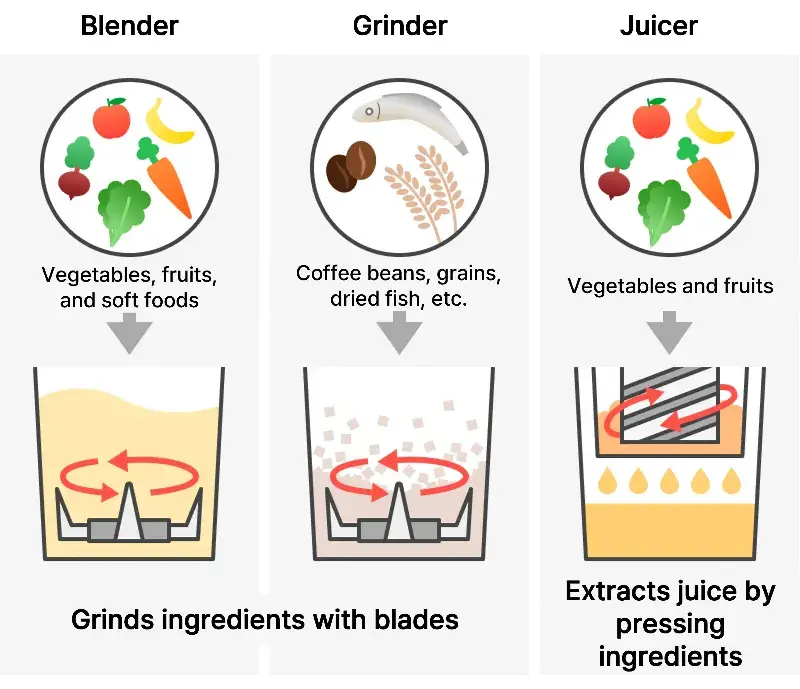
First, we can categorize them based on how they process ingredients.
Blenders and grinders use blades to grind and mix ingredients, while juicers use pressure to squeeze or twist ingredients to extract juice.
They can also be categorized by the main ingredients they’re used for. Blenders and juicers are mainly used for ingredients with moisture like vegetables and fruits, while grinders are primarily used for dry ingredients like grains, coffee, and dried foods.
2. Blenders
The Most Popular and Versatile
Divided into High-Speed, Regular, and Hand Blenders

Blenders use a high-speed motor to rapidly rotate blades, grinding ingredients. They can be used for various purposes such as fruit juices, smoothies, shaved ice, baby food, sauces, grains, and chopping. They are categorized into three types based on their purpose.
Typically, products with motor speeds of 15,000 rpm or higher are classified as high-speed blenders, while those below are considered low-speed blenders (mixers). Additionally, products with blades attached to a stick that you hold in your hand are classified as hand blenders.
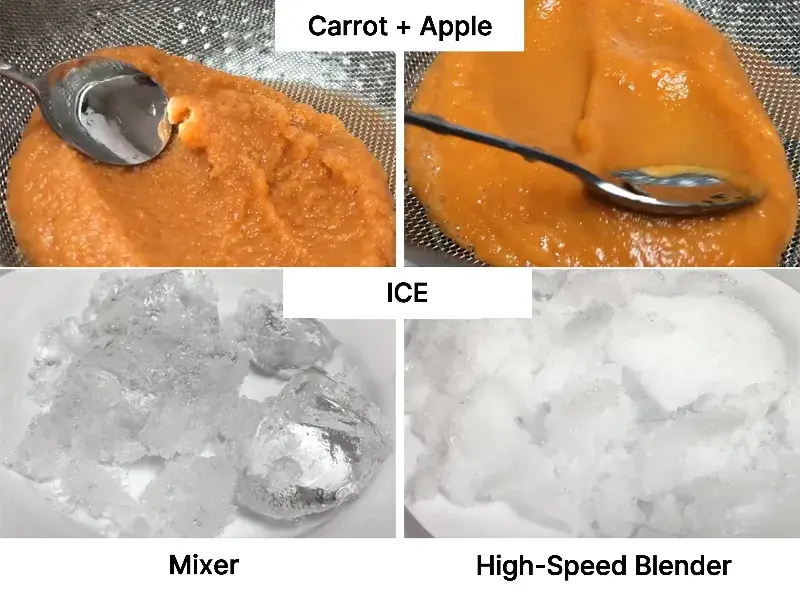
Both mixers and high-speed blenders are mainly used for making fruit and vegetable juices. The difference between the two is in the speed and power of the motor.
High-speed blenders, which grind faster and more powerfully, produce very fine and smooth particles, while mixers, with relatively slower and weaker motors, produce larger particles.
Therefore, high-speed blenders can finely grind hard ingredients like ice or frozen fruit, making it easier to make shaved ice or smoothies. However, they are more expensive than mixers.
On the other hand, if you prefer a slightly chewier texture with larger particles when making juices, soups, or baby food, a mixer might be more suitable and is generally less expensive.
Hand blenders have slower rotation speeds compared to mixers or high-speed blenders, making them more suitable for chopping, kneading, and whipping rather than making juices.
3. Grinders
Suitable for Dry Ingredients like Grains and Coffee

Grinders are similar to blenders but are more suitable for grinding dry ingredients like coffee, grains, and dried fish.
These dry ingredients are harder than moist fruits and vegetables, so grinders are made of sturdy metal materials that are less prone to scratches compared to plastic containers.
4. Juicers
Extract Juice by Pressure
Allowing You to Drink Pure Liquid Without Pulp

Juicers work by rotating blade plates or drums that use pressure to squeeze out the moisture (juice) from ingredients.
The first advantage of juicers is that they cause less nutrient destruction. While blenders can destroy nutrients as ingredients are ground by blades, juicers have no grinding process, resulting in less nutrient loss. However, the downside is that it’s difficult to consume the nutrients left in the pulp or peels after juicing.
Another advantage is that because only the liquid from the ingredients is extracted, you can drink smooth juice without any chewing or pulpy texture. However, this also limits you to using only ingredients with high water content.
Also, while blenders grind all ingredients leaving no waste, juicers produce pulp and peels as waste that needs to be disposed of separately.
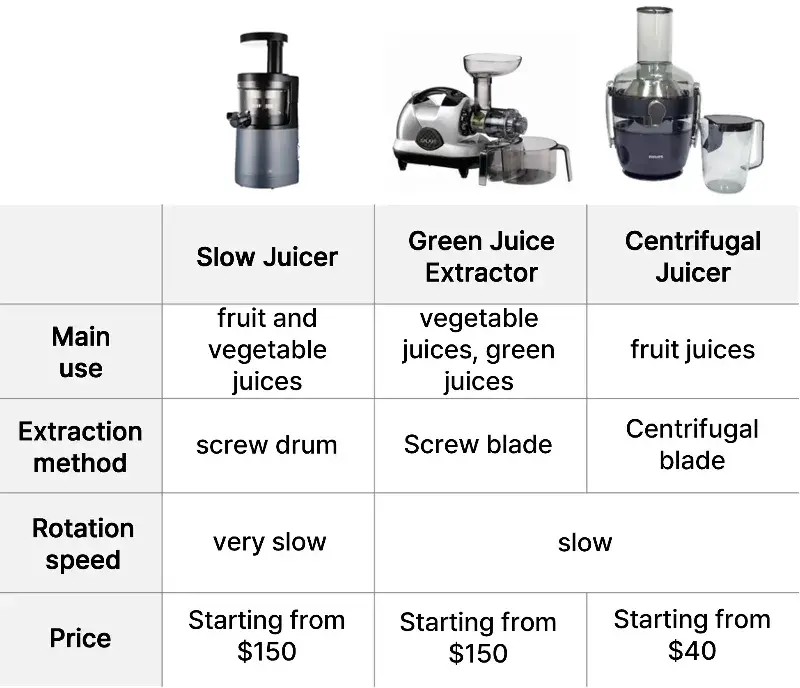
Juicers are classified into slow juicers, green juice extractors, and centrifugal juicers based on their rotation method.
Compared to centrifugal juicers, which have the simplest structure and are the least expensive, slow juicers and green juice extractors have better juicing performance. Additionally, slow juicers operate at lower speeds than green juice extractors, resulting in even less nutrient destruction.
Green juice extractors are mainly used for vegetables, centrifugal juicers for fruits, and slow juicers can be used for both vegetables and fruits.
Which product is right for me?
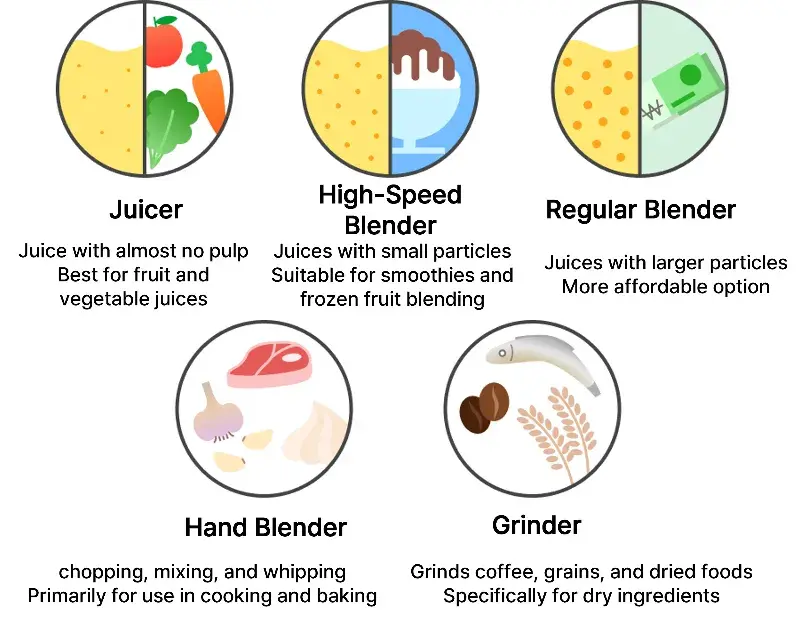
Chapter 2.
Blending Performance
Factors Determining a Blender’s Blending Performance
1. blender Motor Rotation Speed
For Fine Particle Blending,
Recommend Products with 25,000 rpm or Higher
Blender rotation speed is measured in rpm
The most important factor when buying a high-speed blender is how well it can blend ingredients. One of the factors determining this performance is the motor’s rotation speed, expressed in rpm (rotations per minute).
The higher the number, the finer the particles it can produce. Products with higher rotation speeds also have the advantage of being able to blend the same ingredients in a shorter time.
Recommend products with 25,000 rpm or higher
After testing more than 10 high-speed blenders, we found that you need at least 25,000 rpm to evenly blend hard ingredients like ice into small particles. Since consumers buying high-speed blenders instead of mixers expect fine texture and strong blending performance, you need at least 25,000 rpm to get satisfactory results.
However, if you prefer a somewhat chewy texture or don’t mind slightly larger particles, products below 25,000 rpm can be fine too.
Recommend power consumption of 1000W or higher
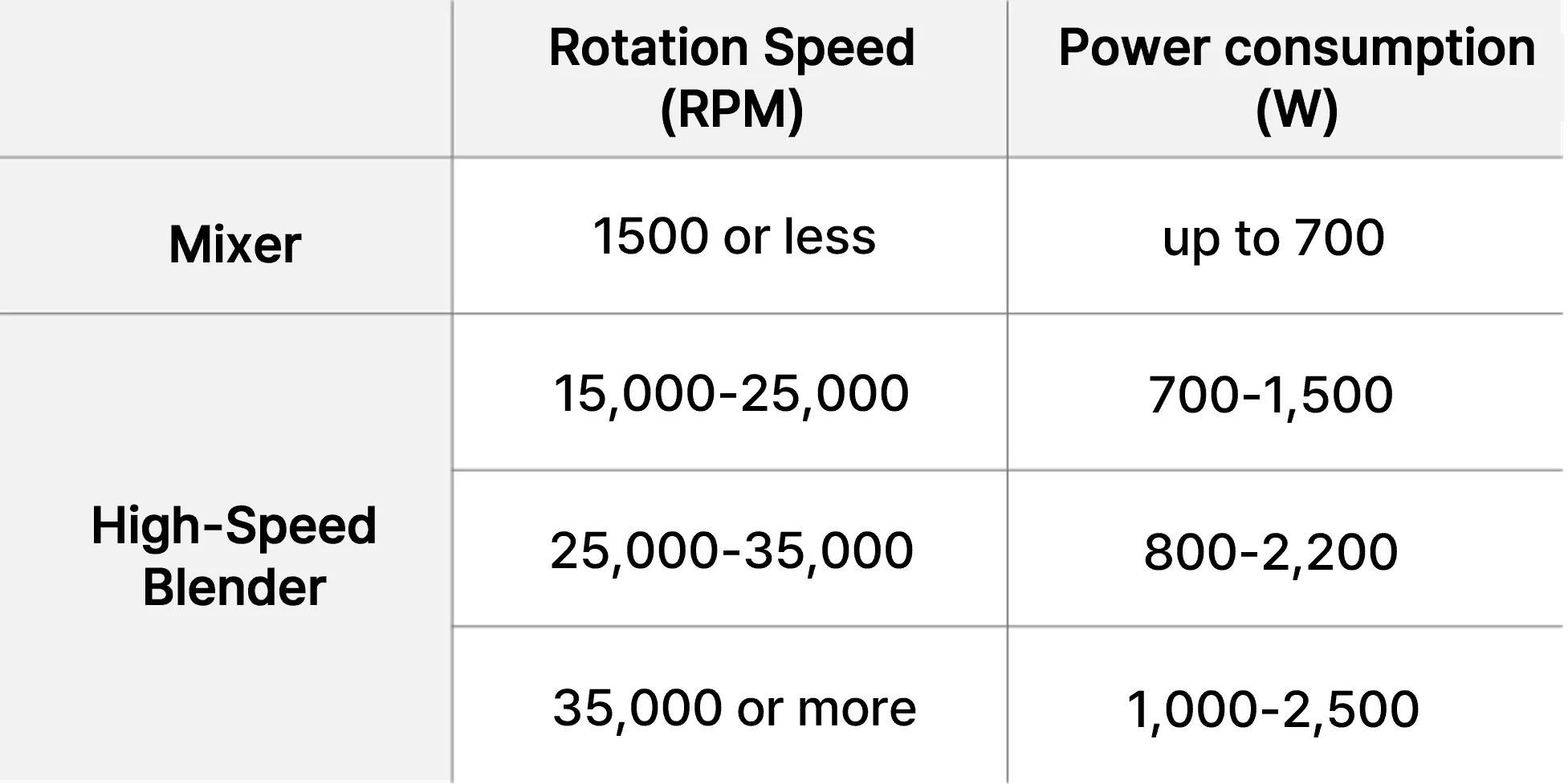
While there are differences between products depending on the type, structure, and efficiency of the motor, generally, motors with higher power consumption can produce stronger rotations. Products with high rotation speeds but unusually low power consumption may lack motor power, potentially resulting in poor blending performance.
Therefore, it’s good to consider both rotation speed and power consumption, and purchase products with at least 1000W. Even with high power consumption, you don’t need to worry about electricity bills as blenders are used for short periods.
However, rotation speed alone doesn’t determine performance
While rotation speed and power consumption are important factors in determining a blender’s performance, blending performance isn’t determined by rotation speed alone. The strength and type of blades, and the shape of the container also influence performance.
Therefore, it’s also recommended to look for product reviews before purchasing.
2. blender Blade Types
Recommend Products with Cross or Double Blades
Cross/double blades have high versatility
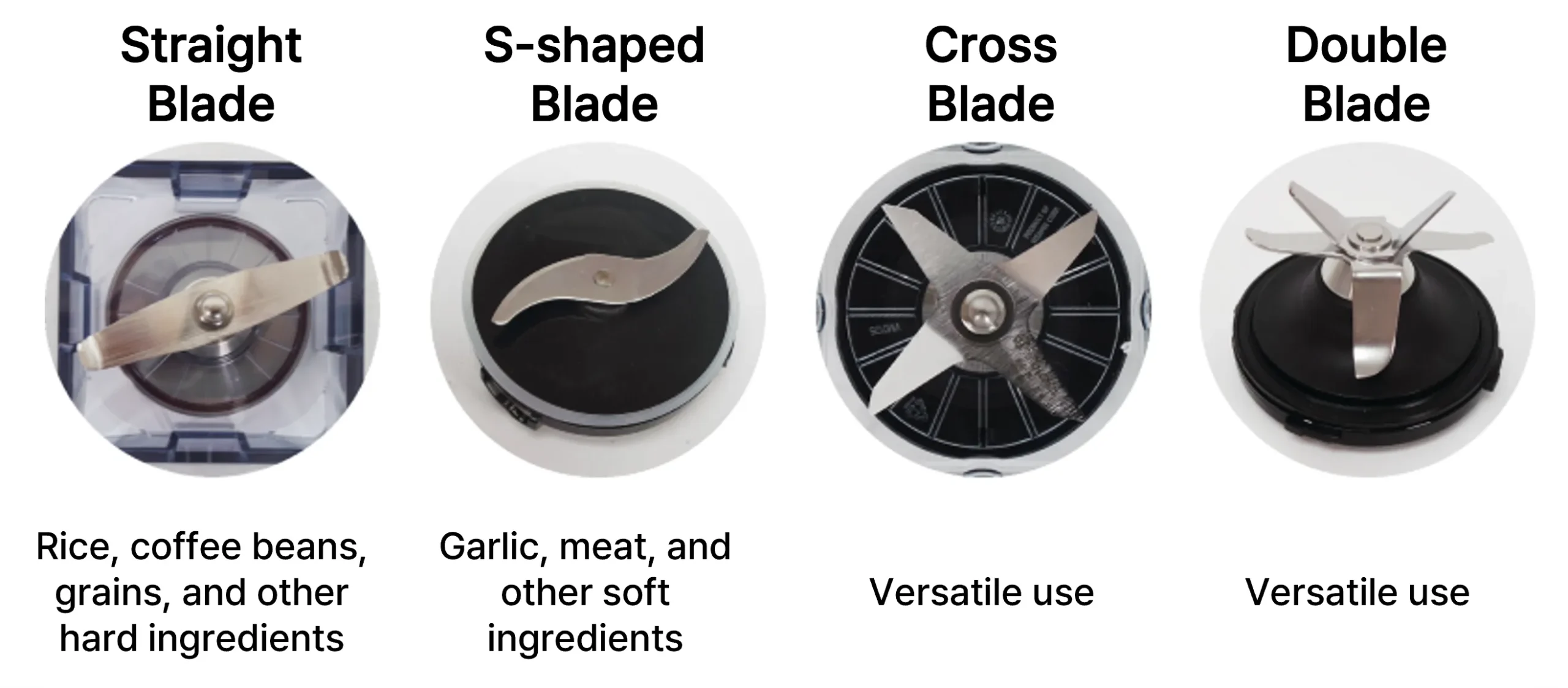
- Straight blades for grinding grains like rice, coffee, beans
- S-shaped blades for chopping soft ingredients like garlic, meat, or for kneading
- Cross/double blades are widely used for various purposes like juices, shaved ice, grinding
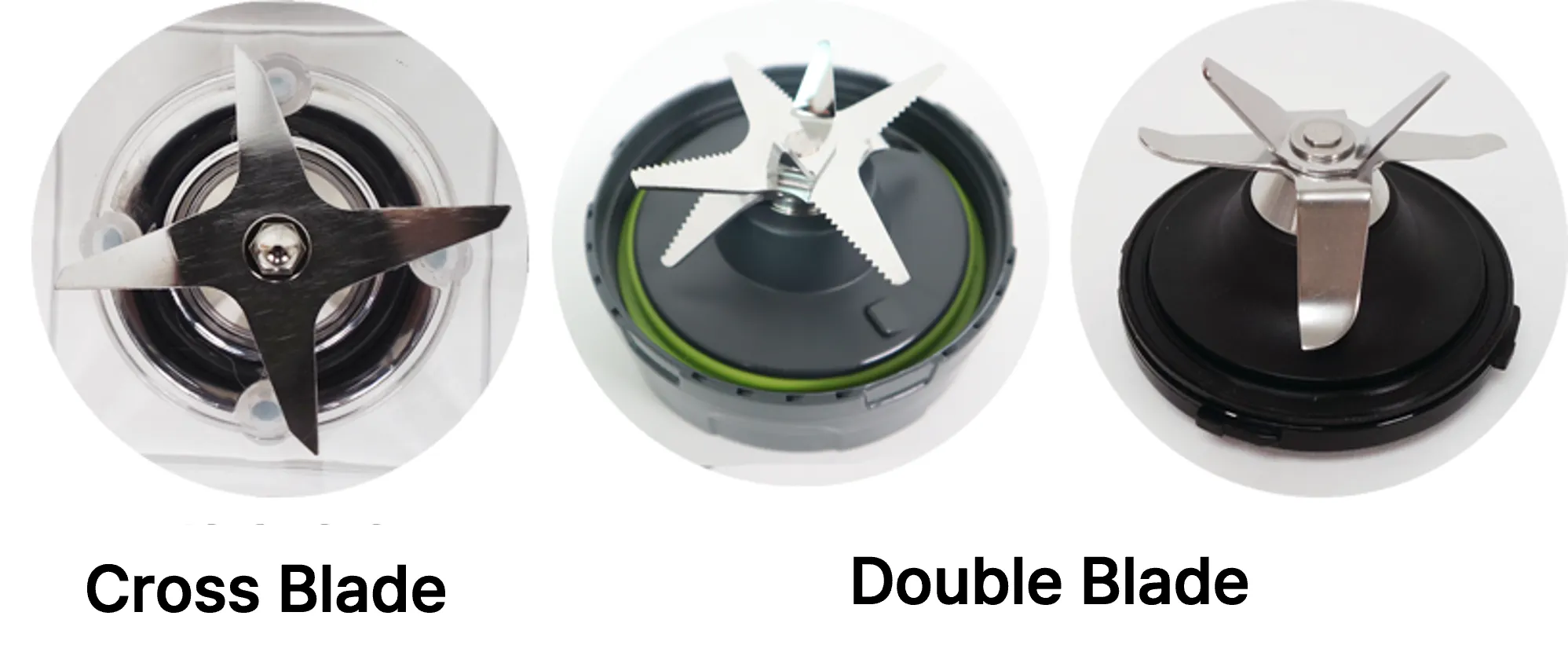
Detachable blades allow for thorough cleaning
But debris can get stuck in the joints

If the blender container and blades are detachable, you can thoroughly clean both the inside of the container and the blades, which is an advantage.

However, detachable blade products are divided into several parts for separation, so debris can get stuck in the joints. This means you need to separate and clean them every time you wash, which some people might find cumbersome.
Products with non-detachable blades can be easily cleaned by adding diluted detergent or vinegar and running the blender.
If you’re diligent and can wash and clean frequently, a product with detachable blades might be good. If not, a product with non-detachable blades might be better.
3. Vacuum Function
Vacuum Blenders Cause Less Nutrient Destruction
and Are Better at Maintaining the Original Fruit Color

Some products have a vacuum function, which uses a vacuum lid or pump to block external air intake, creating a vacuum inside the container.
Manufacturers advertise these products as causing less nutrient destruction, maintaining color, having less separation, and tasting better.
Blocks contact with oxygen
Reducing nutrient destruction
When the rapidly rotating blades blend vegetables or fruits, a large amount of air is introduced into the contents. This can cause oxidation of the ingredients, potentially destroying nutrients, but vacuum blenders can reduce nutrient destruction by blocking oxygen intake.
However, nutrient destruction can also occur due to frictional heat generated during blade rotation, which vacuum blenders can’t prevent.
Better at maintaining fruit color and producing less foam

Using a vacuum blender has the advantage of reducing browning of fruit juices and foam production.
Browning occurs when fruit enzymes meet air and change color, but using the vacuum function can reduce contact with air, maintaining the fruit’s original color. Also, less foam is produced when making juice, allowing you to drink it in a cleaner state.
No significant difference in layering or taste

After testing 10 blenders, it was difficult to conclude that vacuum blenders had less layering. Rather, layering depended on how evenly the particles were blended, and there were differences depending on the ingredients, without consistent results.
In the same test, we also compared tastes, but there was no feeling that vacuum products tasted better, and overall, there wasn’t much difference in taste.
Therefore, the vacuum function isn’t essential, and as it’s generally more expensive, it’s best to decide based on your budget.
Chapter 3.
blender Ease of Use
What features make it more convenient?
1. Additional Input Opening
Additional Input Opening and Tamper Are Very Convenient
Can add ingredients
without opening the lid

Some products have sealed container lids, while others have additional input openings covered by auxiliary lids. There are many cases where you need to add ingredients or more water during operation, and having an additional input opening allows you to add ingredients without opening the container lid, which is convenient.
In actual use, when making a large amount of juice, gaps often occur between fruit pieces or ice cubes, preventing them from entering all at once. Products without an additional input opening can be quite inconvenient as you have to open the tightly closed lid.
Having a tamper makes it even more convenient
allowing you to mix during operation

Also, products with a tamper in the additional input opening are useful when ingredients clump together or get stuck to the container during operation, causing the blades to spin ineffectively. With a tamper, you can stir the ingredients or push them towards the blades, resulting in better blending.
Without a tamper, some people might use chopsticks, which can be very dangerous as they might hit the blades.
Some blenders have a heating function. In this case, if the tamper has a temperature gauge, it’s convenient for checking the temperature when making warm foods like soups or baby food.
2. Automatic Cooking Mode
Automatic Cooking Mode is a Useful Feature
But Often Goes Unused
Juices, smoothies, grinding, porridge, chopping, etc.
can be operated with a single button

The automatic cooking mode is a feature that sets appropriate time and speed according to the strength and type of ingredients, allowing you to cook properly just by pressing a button. Depending on the product, there are about 2-8 modes set for juices, smoothies, chopping, grinding, porridge, ice, etc.
This feature is convenient as it automatically adjusts operating time, speed, and start/stop. Especially if you’re cooking soups or baby food, products with heating functions added to automatic cooking can be useful.
However, many people prefer manual operation due to differences in desired blending levels and varying factors like quantity and ingredients. In such cases, products with a timer function that allows you to set cooking time might be convenient.
3. blender Container
Recommend Tritan Material Containers
with Capacity of 1.6 qt or More for a Family of Four
Tritan is highly durable
and free from suspected environmental hormone substances
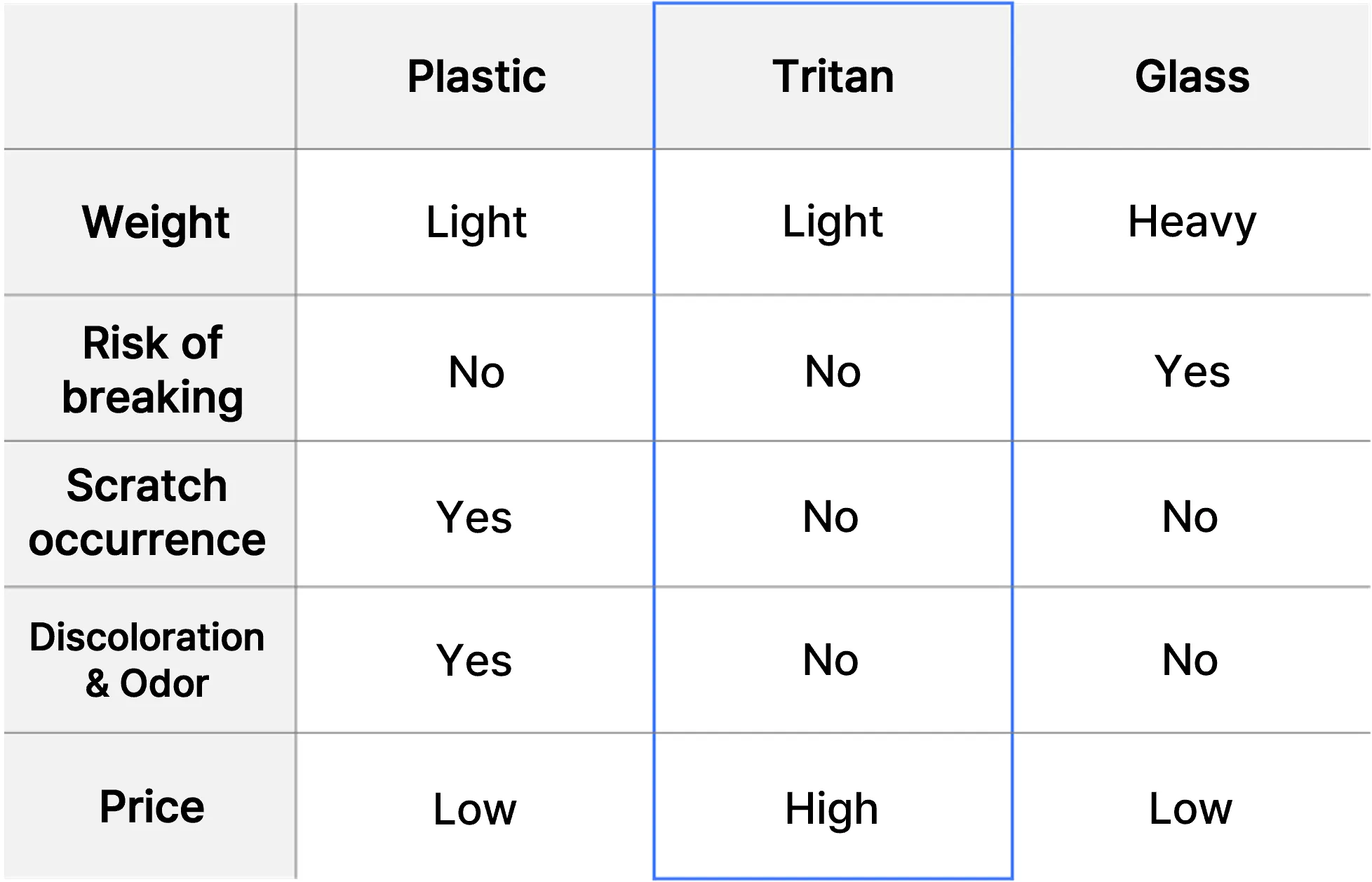
Container types vary by material:
- Plastic: lightweight and unbreakable, but can discolor and scratch
- Glass: resistant to discoloration and scratches, but can break
- Tritan: addresses the drawbacks of both
Low-speed blenders mainly use plastic and glass, while high-speed blenders often use glass and Tritan materials.
Tritan is a material often used in baby bottles and has the advantage of being free from suspected environmental hormone substances. However, it’s about $40 to $80 more expensive than the same product with a glass container.
Glass containers weighing over 4.4 lbs
are inconvenient to move and clean due to weight

You could consider glass containers for good value for money. However, glass containers weigh about 4.4 lbs, which is quite heavy compared to plastic or Tritan containers weighing around 2.2 lbs. This weight can be burdensome if used frequently or for those with less strength.
When actually using a 4.4 lb glass container, even adult males found it not light to carry, and it was especially inconvenient during dishwashing.
For a family of four,
a capacity of 50 oz or more is convenient

To make enough juice for a family of four to drink at once, you need at least a 50 oz capacity. Also, since ingredients don’t blend well if the container is filled to the brim, we recommend a minimum of 50 oz.
4. Size & Weight
If Storage Space is Limited,
Recommend Products Under 20 inches in Height
Most are quite heavy, weighing 8.8 to 15.4 lbs
High-speed blenders are designed with strong rotating motors and weights to support them, with even light ones weighing 8.8 lbs and heavy ones up to 15.4 lbs. Usually, they’re placed in one spot in the kitchen and not moved often, so you don’t need to consider the weight of the main body too much.
Choose a height
that fits your storage space
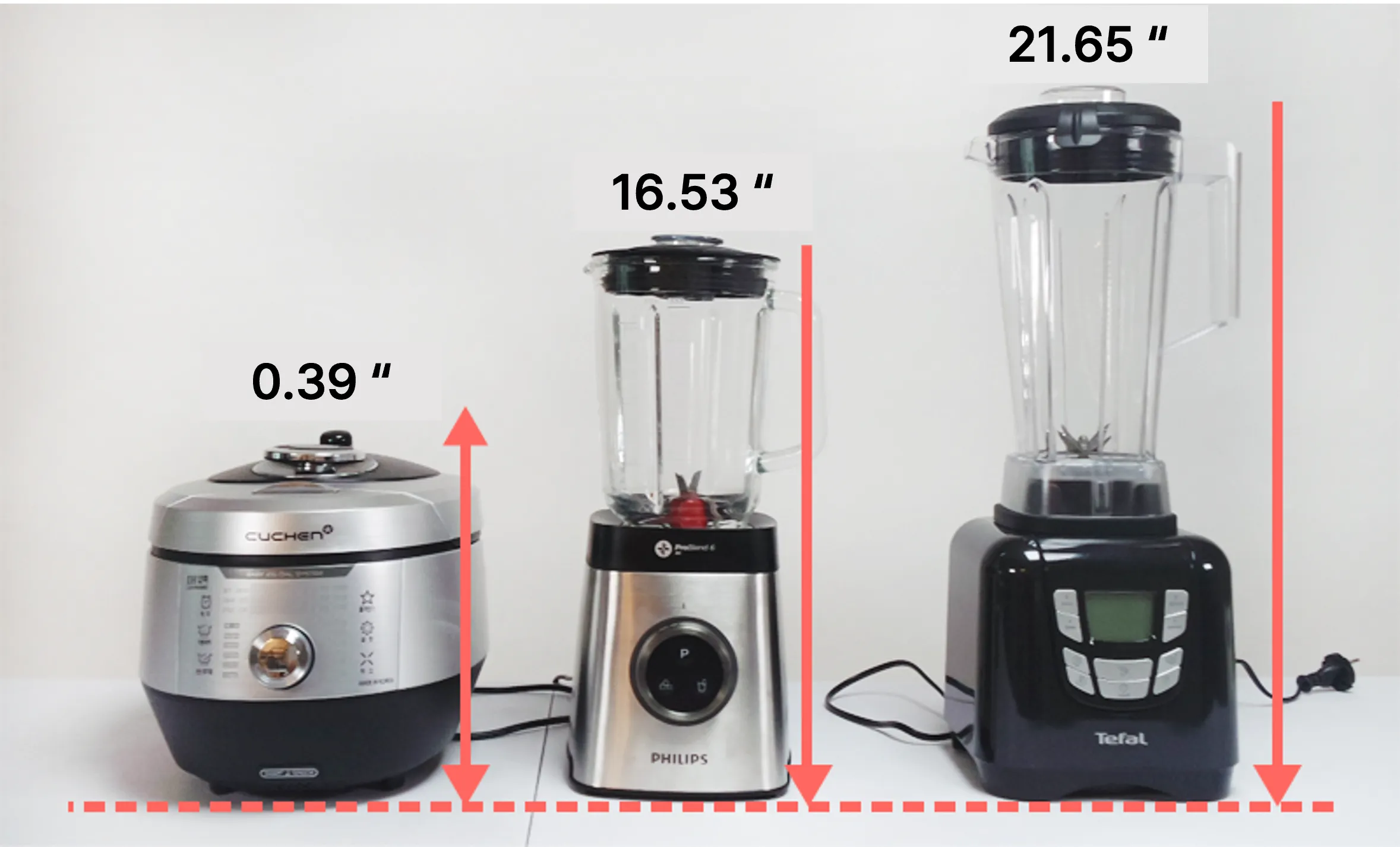
Even with the same weight and capacity, the height can vary from about 16 to 22 inches depending on the shape of the main body and container. If you store it assembled or have limited storage space in your kitchen, it’s good to purchase a product that fits the size of your storage cabinet.
5. blender Noise
Most are Very Loud at Minimum 80dB
Looking for Less Noisy Products is Pointless
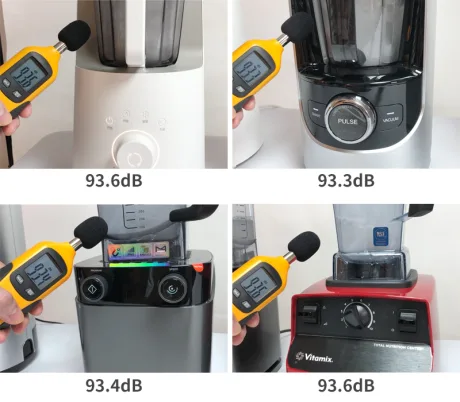
High-speed blenders have powerful motors and high rpm, making them very noisy when in use. Test results showed 77-85dB at minimum speed and over 90dB at maximum speed, similar to cordless vacuum cleaners or hair dryers.
However, noise level isn’t a factor to consider when selecting a product. This is because blenders are used for very short periods, maximum 3 minutes.
If you’re sensitive to noise or in an environment with poor soundproofing, it’s recommended to buy a mixer instead of a high-speed blender.




